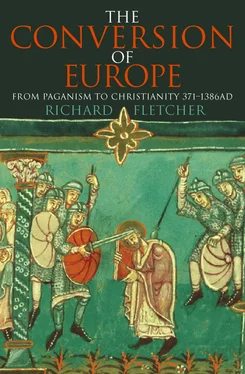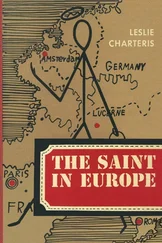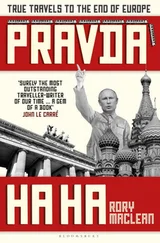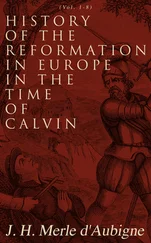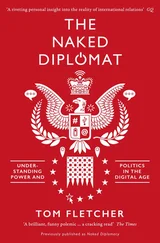The theme is a grand one and the agenda (quite frankly) daunting. This is the more so because the sources to which we may turn for information are sparse and uniformly problematic. Early medieval Europe was a society of restricted literacy. Most of those who could read and write during the period which is my concern were ecclesiastics. In consequence, very nearly all the surviving written narratives were composed by what might be called professional Christians for a primary audience of other professional Christians. Works thus composed reach us only after a process of passing, so to say, through several different filters which have impeded the free flow of information. In the first place there was a kind of voluntary censorship practised by their authors. There are many things we should like to know about which these writers never tell us. A notorious example is furnished by Bede’s reluctance to tell us much about Anglo-Saxon paganism. A second source of difficulty is that these narratives are almost invariably to some degree didactic. I have already said that Bede’s portrayal of Edwin and Paulinus was drawn with an eye to the kings and clergy of his own day a century later. Indeed, there is not a single chapter in Bede’s great Ecclesiastical History which cannot be shown to have had a didactic purpose of one sort or another. The lessons which such writers sought to teach may not always be clear to the modern reader, but the didactic intent usually is. Now teaching lessons involves a measure of selection, of emphasis, of simplification, of omission. Here then is another filter through which the information has to pass. Bede presented Edwin as a sober statesman and an earnest seeker after truth. One cannot help suspecting that there may have been other sides to Edwin’s character than these. But this is how Bede wanted his audience to see him.
The most overtly didactic narrative literature of the period is that branch of Christian biography known as hagiography, or the lives of the saints. During the early Middle Ages the control of saint-making with which we are familiar – a formal process of canonization under papal supervision – did not exist: canonization in this guise was an invention of the ecclesiastical lawyers of the twelfth century. Instead, holy men and holy women ( sancti, sanctae ) were simply recognized and revered as such by neighbourhood and community. One way of keeping the memory of a saint fresh was by the composition of a memoir, the saint’s life ( vita ), which could be read aloud for edificatory purposes in the religious community to which the holy man or woman had belonged in life, and where his or her relics were treasured after death. Edification is the key word in this context. Although hagiography came – as it still comes – in many different costumes its aim was consistently to edify – to hold the saint up as an example of godly living and holy dying, to spur listeners or readers to compunction and devotion. One means of edification which may cause disquiet to the modern reader was the recording of wonders and miracles worked by the saint. Early medieval Europe was a world in which persons of every level of intellectual cultivation accepted without question that the miraculous could weave like a shuttle in and out of everyday reality. We need to remember this, and to resist the temptation to dismiss it out of hand as infantile credulity: patronizing the past never helped anyone to understand it. Hagiographical writings survive in great abundance from this period. They constitute an important source of information for the historian. At the most obvious level the lives of the saints contain an enormous quantity of incidental information about daily life. To give a trivial example, we learn from Chapter 20 of Bede’s Life of St Cuthbert that the saint used pig’s lard as a kind of dubbin with which to grease his leather shoes. At a more subtle level of interpretation saints’ lives can tell us something of the expectations which people held of their holy men and women. Did the saint foretell the future? Heal the sick? Found monasteries? Rebuke the mighty? Control the weather? Preach to the heathen? Wreak vengeance on his enemies? See visions? Practise ascetic self-denial? Sensitively used, hagiographical writings can enable us to peer into some at least of the more intimate religious feelings and aspirations of a people distantly removed from us in time.
Of course, matters are rarely straightforward. In the path of every historian of the early Middle Ages – and especially but not exclusively those who concern themselves with hagiography – there lies like some Slough of Despond the quagmire of the topos. The Greek word for ‘place’, topos has been adopted into the jargon of literary scholars to mean, in the words of the Oxford English Dictionary , ‘a traditional motif or theme (in a literary composition); a rhetorical commonplace, a literary convention or formula’. In the context of hagiography what this means is that there existed, as it were, a bank of stock tales, themes, phrases on which the hagiographer could draw without restraint or acknowledgement: for example, future sanctity foreshadowed in childhood; renunciation of home and kinsfolk; the edifying deathbed, etc. But we need not restrict ourselves to hypothetical examples: let us return to Cuthbert and the pig’s lard. In the story it was brought to him on Farne Island by a pair of ravens (and if you want to know the ostensible reason why you had better read it for yourself). Bede himself tells us that the story of Cuthbert and the ravens was ‘after the example’ of a tale told by Pope Gregory in his account of St Benedict, founder of Montecassino and author of the Benedictine Rule. Behind this lies the story, well-loved in the early Middle Ages, of how the hermits Paul and Antony were sustained by a raven who brought them bread in the desert. Lurking still further back is the story in I Kings xvii of how the prophet Elijah was fed by ravens at the Lord’s command when he lay concealed beside the brook Cherith. It is extremely common to find that episodes in one saint’s Vita were modelled upon episodes in another or in the Bible. This feature of the literature raises nagging anxieties about historicity. To what extent might the demands of matching form and content to a literary model have distorted the reality which the writer professes to convey?
Conversion narratives, of which Bede’s account of Edwin is but one of many that we shall encounter, offer an open door to colonization by formulaic topoi. They present additional snags all of their own. The business of organizing a narrative round a conversion is in itself liable to project sharpness of outline on to a historical reality which was more likely than not blurred and indistinct. Hagiographical piety and didactic intent might highlight the missionary’s role by casting as unalloyedly pagan a people who had already been touched by Christianity. Narrative drama could be enhanced by presenting conversion as a moment rather than a process. Hindsight could show as smooth and harmonious the growth of a church which in reality had been characterized by improvisation and quarrelling. Even – or perhaps especially – the simple and fundamental opposition ‘pagan/Christian’ might be deceptive. In a word, we have to exercise great caution in our handling of the conversion narratives which have come down to us.
Narratives such as Bede’s Ecclesiastical History and hagiographies such as his Life of St Cuthbert are our most important written sources but not our only ones. They can be supplemented with sermons, tracts, letters, legislative enactments, deeds relating to property, poetry both sacred and profane. Each presents difficulties of interpretation. Sermons and lawcodes are normative or prescriptive; their authors tend to encourage the ideal rather than to describe the actual. Lettercollections such as Alcuin’s were on the whole valued and preserved rather for their style than for their content. Deeds rarely survive in their original form; the texts of the copies which have come down to us may have been tampered with in the course of transmission. Unattributed poetry is hard to date.
Читать дальше
